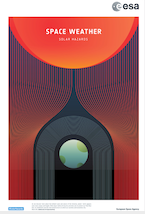Speaker
Description
It is well known that diffraction of radio phase fronts produces amplitude and phase fluctuations even at GHz frequencies used for satellite communication and navigation systems. These scintillations are caused by naturally occurring ionospheric plasma density irregularities at scales from hundreds of meters to a few kilometres, that are generally most severe at high and low latitudes, the so-called SATCOM outage regions.
In order to monitor problem regions for GNSS services, we need to resolve electron density gradients down to meter scales. Conventional techniques for measuring electron density have insufficient sampling rates to obtain this resolution. The UiO m-NLP system concept, working on up to 10 kHz sampling rate, was originally invented for the Norwegian sounding rocket program: “Investigation of Cusp Irregularities (ICI) sounding rockets program, to investigate plasma instability key processes in connection with polar cap patches and the northern lights. Several satellite versions of the instrument have been developed, miniaturized to also fit CubeSats. The m-NLP system currently inherits flight heritage as a space weather payload onboard Norsat-1. Eidsvoll Electronics AS has space qualified the m-NLP instrument for ESA satellites through the GSTP program
It is proposed that the m-NLP system onboard a constellation of LEO satellites will have the capability to monitor turbulent ionospheric regions which can be used as input to future GNSS space weather forecast models.

